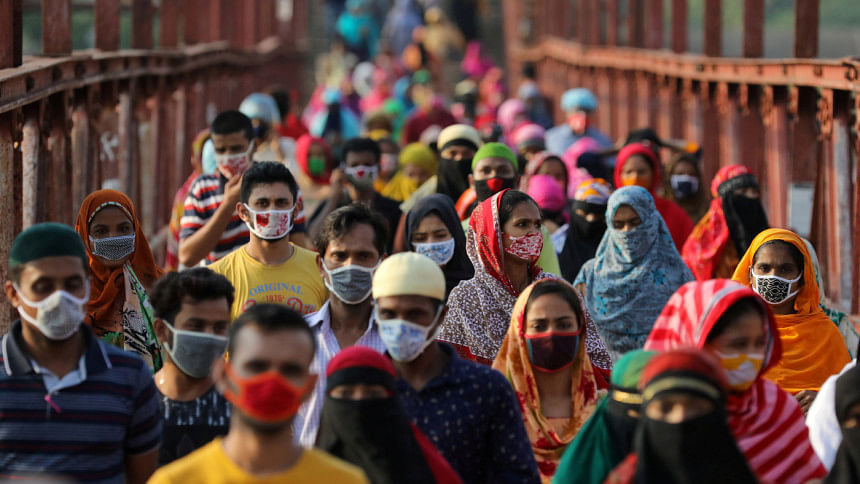Epidemiological transition in South Asia

South Asia's double burden of communicable and non-communicable diseases
Developing countries have been experiencing several major changes simultaneously: demographic, epidemiological, and economic. The population growth rate is declining while the economy is witnessing rapid growth. Furthermore, remarkable improvements in life expectancy are occurring.
Many developing countries are witnessing a major epidemiological transition, with the prevalence of communicable diseases (CDs) declining and non-communicable diseases (NCDs), such as cardiovascular disease, diabetes, cancer, and mental illness, rising. NCDs are rapidly becoming dominant causes of ill health in developing countries. Although CDs such as HIV, malaria and tuberculosis continue to be major burdens, NCDs account for about half of all deaths in developing countries. According to the World Health Organization, the war against ill health in the 21st century will have to be fought simultaneously on both fronts: CDs and NCDs. Many developing countries are increasingly coming under greater attack from both CDs and NCDs while CDs remain undefeated. This double threat imposes the need for difficult decisions regarding the allocation of scarce resources to the health sector.
In Asia, the epidemiological transition is due to a shift from a dominance of CDs to a rise in NCDs, unlike in the West, where CDs declined before NCDs became prominent. With high rates of both CDs and NCDs, Asia accounts for a significant share of the global burden of disease.
South Asia, with a population of about 2.1 billion people, is home to around a quarter of the world's population. India, with a population of around 1,43 billion, accounts for over two-thirds of all the people living in the region, followed by Pakistan, Bangladesh, Afghanistan, Nepal, Sri Lanka, Bhutan, and the Maldives.
Since 1970, the South Asian countries have witnessed population growth and increases in life expectancy that have, in the long run, outweighed the negative impact of catastrophic events, such as famines. In 1970, life expectancy in South Asian countries ranged between the 50s to mid-60s. In 2024, it increased substantially, with most countries reaching mid to high 70s. Many South Asian countries have been experiencing a rapid rise in their elderly population (60-years-plus) because of longer life expectancy and falling birth rates. The region has been experiencing substantial economic growth as well.
The leading causes of illness and death in South Asian countries were the CDs like pneumonia and diarrhoea in 1970s. By 2024, the South Asian region experienced a considerable epidemiological transition, with NCDs becoming more prominent.
Afghanistan is facing a double burden of disease. NCDs contribute heavily to mortality and morbidity, while CDs (malaria, TB, and HIV) continue to pose a considerable threat as well.
In Bangladesh, there has been a considerable decline in deaths from CDs, while NCDs' share of the total burden of disease more than doubled from around 30 percent in 1970 to around 67 percent in 2024. NCDs are now the leading causes of death here.
In Bhutan, NCDs represented a small fraction of deaths in 1970, but by 2024, they overtook CDs and accounted for over 70 percent of deaths.
In India, CDs were the dominant cause of death in 1970; however, there has been a shift towards NCDs, which are now the leading cause of death, accounting for over three-fifths of all deaths.
In the Maldives, CDs accounted for a substantial portion of the causes of death in 1970; however, by 2015, there was a shift towards NCDs, which is now the leading cause of death, accounting for around 80 percent of all deaths in the Maldives.
In Nepal, CDs' share of the disease burden has declined considerably from around 70 percent in 1970 to around 20 percent, while the share of NCDs increased sharply to over 70 percent.
In Pakistan, CDs continue to be a major public health issue, although the share of NCDs has increased and accounted for around 60 percent of deaths in 2024.
In the 1970s, CDs were a major public health concern in Sri Lanka. However, in 2024, NCDs accounted for around 90 percent of the total disease burden.
This double burden of diseases in South Asian countries has serious implications, both on the individual, household, and national levels.
In South Asia, the healthcare delivery systems, both public and private, face various inefficiencies. The public sector programmes have inadequate infrastructure that hinders access to quality care, shortage of trained health care providers at different levels of service delivery, lack of essential equipment and medicines, inadequate funding, and weak implementation capacity. The private sector is largely unregulated. In addition, it charges exorbitant prices for services it offers. Most people seeking care from the private sector cannot afford such expensive care and treatment, and those who avail themselves of such services often have to bear expenses out of their savings and/or borrow money from others. The high out-of-pocket (OOP) expenses push many into deeper poverty, especially in the absence of sound social safety net programmes.
Although considerable progress has been achieved in reducing poverty in the South Asian countries, they contain a disproportionately large share of the world's poor. While South Asia is home to around one-quarter of the world's population, around two-fifths of the world's poor live in the region.
In these countries, diseases and morbidity have serious adverse effects on productivity and overall economic growth. NCDs and CDs result in lost workdays, reduced capacity of the workforce, thereby adversely affecting the country's human capital, and premature deaths that lead to huge economic losses.
Barkat-e-Khuda, PhD, is a former professor and chairman of the Department of Economics at Dhaka University. He can be reached at: [email protected].
Views expressed in this article are the author's own.
Follow The Daily Star Opinion on Facebook for the latest opinions, commentaries and analyses by experts and professionals. To contribute your article or letter to The Daily Star Opinion, see our guidelines for submission.

 For all latest news, follow The Daily Star's Google News channel.
For all latest news, follow The Daily Star's Google News channel. 










Comments